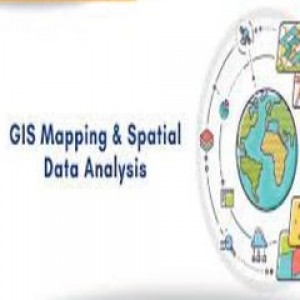
Training Course on GIS Mapping using QGIS
By
Datastat Consultancy Limited
10 Followers
Follow
Event Details
Training Course on GIS Mapping using QGIS
Introduction This training introduces students to both the social and technical aspects of digital mapping. Students will learn fundamental concepts and techniques in cartography and GIS, including file types, data classification, projections and coordinate systems and elementary analytical techniques in a range of desktop and web-based mapping platforms. In addition to providing the fundamental technical competencies necessary to create maps, students will develop the critical awareness required to effectively communicate complex social processes through maps. Duration 5 Days Who should apply? Government, Environment, Data analysis, Retailing, Fleet management, Marketing, Property development, Emergency response, Transport, Military defense, Healthcare, Oil and gas, Agriculture, mining, disaster risk management Forestry, M&E, WASH, Engineers, Telecommunications Utilities, geographers, teachers, journalists, students etc. Learning Objectives Upon course completion, participants should be able to: i. Define and differentiate between variety of spatial data models and formats ii. Explain and apply the basics of representation in GIS, including using vector and raster data formats, determining appropriate geographic coordinate system for a given spatial data file and applying the appropriate geographic projection to a map type and spatial scale iii. Manipulate geospatial datasets (e.g. cleaning, joining, querying, extracting). iv. Apply appropriate thematic map symbology to represent geographic phenomena v. Produce static map products that integrate multiple data types and analytical methods vi. Obtain geospatial data from a variety of online sources and integrate into mapping processes vii. Integrate desktop GIS procedures with web-based mapping platforms Course Content Module 1: Introduction, cartography and GIS, and creating maps in QGIS a. Gain a basic conceptual understanding of cartography, GIS, and mapping b. Gain familiarity with geographic data and information, and how it's encoded within computer files c. Gain a basic familiarity with the QGIS interface d. Gain awareness of spatial reference and projection issues e. Practice opening a variety of geographic data with QGIS and viewing their attributes within QGIS f. Perform basic map styling g. Create and export a basic map as a static image file Module 2: Thematic data mapping, Geocoding and point in polygon analysis a. Load shape files and CSV data into QGIS b. Data transformation c. Create classed choropleth mapd. d. Adjust the legend to help the map tell a clearer story e. Load tabular CSV data into QGIS and performing a tabular join f. Obtaining and working with US Census data g. Understand and perform geocoding of tabular data h. Learn about some of the geocoding tools available online i. Understand and perform a point in polygon analysis Module 3: Heat maps, creating and editing vector Geometries a. Map point data b. Create a 'heat map' representation of the data c. Georeferencing d. Digitizing data e. Digitizing data with Open Street Map in QGIS f. Introduction to Open Street Map g. Importing OpenStreetMap data h. Importing OpenStreetMap data: SpatialLite Database i. Data filtering and extraction j. Exporting layers to a local CRS k. Introduction to Geoprocessing l. Geoprocessing with a buffer analysis m. Extracting and preparing thematic OSM data n. Filtering OSM data to create desired features o. Managing CRSs in a Geoprocessing Workflow p. Extracting attribute types of interest q. Creating a buffer around a Polyline feature r. Clipping features within a buffer s. Geoprocessing functions t. Using the Graphical Processing Modeler to automate workflows Module 4: Intergrating QGIS with CartoDB, advanced mapping techniques with QGIS and CartoDB a. Creating a CartoDB account and exploring the documentation and interface b. Loading data into CartoDB c. Using the QGIS CartoDB plugin d. Pulling data down into QGIS for processing e. Pushing data backup to CartoDB f. Making a thematic map in CartoDB g. Using SQL in CartoDB h. Data symbolization and analysis in CartoDB i. Creating an unclassed proportional symbol map in CartoDB j. Creating shareable and interactive web maps with QGIS Methodology The instructor led trainings are delivered using a blended learning approach and comprises of presentations, guided sessions of practical exercise, web-based tutorials and group work. Our facilitators are seasoned industry experts with years of experience, working as professional and trainers in these fields. Key Notes i. The participant must be conversant with English. ii. Upon completion of training the participant will be issued with an Authorized Training Certificate iii. Course duration is flexible and the contents can be modified to fit any number of days. iv. The course fee includes facilitation training materials, 2 coffee breaks, buffet lunch and a Certificate upon successful completion of Training. v. One-year post-training support Consultation and Coaching provided after the course. vi. Payment should be done at least a week before commence of the training, to DATASTAT CONSULTANCY LTD account, as indicated in the invoice so as to enable us prepare better for you. We also offer online training. Course Fee: Ksh 80,000, USD 900.
Entry Fees
Free Registration
Categories
Event Frequency
One Time
Event Timings
(GMT+3:00) Nairobi
08:00 AM - 05:00 PM (Oct 18, Oct 19, Oct 20, Oct 21, Oct 22) (General)
Organizer

Datastat Consultancy Limited
10 Followers
Follow
Change your life through learning. Over 100 courses discounted each for a limited time.
User Community
Comments on Training Course on GIS Mapping using QGIS
G
Gondo Reniko
2023-05-11 09:43:26
I am requesting for more information on this course
You must Login to write a comment.
Peoples Interested in Visit
F
Event Location
Datastat Research
5402-00100 ,
Nairobi 00100, Nairobi, Kenya
Nairobi 00100, Nairobi, Kenya
Official Link :















